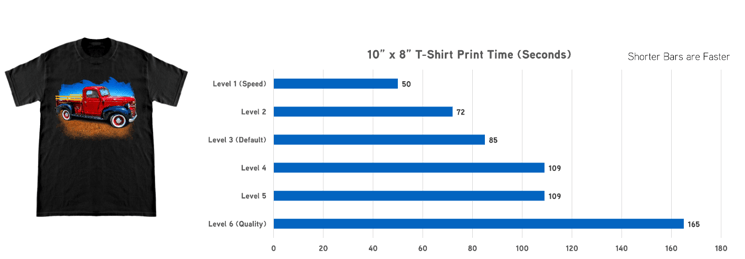Direct to Garment Printing - Tips and Tricks
One very popular inquiry our team receives is related to direct-to-garment printing (aka DTG). DTG is a great way to bridge the gap between cutting heat transfer vinyl and screen printing. Screen printing has a higher labor involvement that can make even orders of 60-80 shirts unprofitable, while heat transfer can't achieve complex images or has that raised feel that many customers do not like. DTG is a method that prints into the substrate with digital technology, achieving great quality but with minimal labor or time, meaning one person can successfully produce quality work with lower manual work.
All that said, like any printing process, there are ways to set yourself up for success. With DTG, there are Four important factors to consider.
- Shirt Quality and Fiber
- Pre-Treatment
- Design
- Proper Curing
We will also cover this info LIVE during a webinar on June 9th, 2022! Register here!
1. Shirt Quality and Fiber
The Epson F2100 and 3070 are set up to print well on a variety of shirts, but the ideal shirt is 100% ring-spun cotton. A cheaper shirt with a rough feel doesn't have a stable surface to receive ink and will affect the quality. Adding multiple fibers can also make the printing process more challenging.

2. Pretreatment
Pretreating is crucial for quality printing on dark shirts. Pretreat solution keeps the ink from soaking too far into the fabric, which leaves a shirt with a poor print. Especially on dark shirts, where you lay down a layer of white ink, which allows the color to pop and achieve the result you want. The pretreat is best applied with a machine designed for the application, like the Lawson Zoom or Silver Jet. The pretreat is often mixed with distilled water on site also. Depending upon the pretreat solution used and the garment, different mixes may help you improve image quality.
3. Design
Just like any paper or vinyl printer, the design is key. High-quality vector images will help the printer do what it can do. Epson DTG printing has enormous advantages over heat transfer and screen printing; especially on photo-realistic images. Having a great, professional file will help tremendously.
4. Proper curing
The final step in the process is drying the ink. Although most customers use a heat press, a tunnel dryer is fast and hands-free. Having a quality heat press with even heat is again a great help. One trick for heat press users is to "hover" the press over your freshly printed garment and help the ink dry before the parchment paper touches it, then apply the paper and lower the press. Pressure is not important, but the temperature is. Too much heat can scorch the shirt and too little can leave the ink not fully dried.
Be sure to watch our LIVE webinar for more information! Register here!



